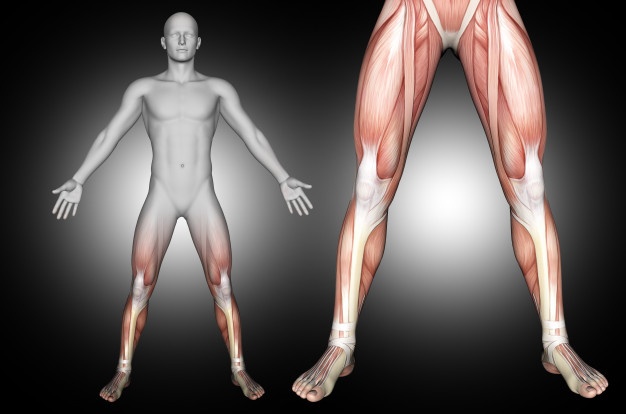Achilles tendinitis is an abuse injury of the Achilles ligament, the band of tissue that associates lower leg muscles at the rear of the lower leg to your heel bone. Achilles tendinitis most usually happens in sprinters who have out of nowhere expanded the force or span of their runs.
It’s likewise normal in moderately aged individuals who play sports, like tennis or b-ball, just at the end of the week. Most instances of Achilles tendinitis can be treated with generally basic, at-home consideration under your primary care physician’s management.
Taking care of oneself methodologies are generally important to forestall repeating episodes. More-genuine instances of Achilles tendinitis can prompt ligament tears (bursts) that might require a careful fix.
Symptoms
The aggravation related to Achilles tendinitis commonly starts as a gentle hurt toward the rear of the leg or over the heel subsequent to running or different games movement. Episodes of more-serious torment might happen later drawn out running, step climbing, or running.
You may likewise encounter delicacy or firmness, particularly toward the beginning of the day, which generally improves with gentle movement. In the event that you experience tireless agony around the Achilles ligament, call your primary care physician.
Look for sure-fire clinical consideration assuming the aggravation or incapacity is serious. You might have a torn (cracked) Achilles ligament.
Causes
Achilles tendinitis is brought about by monotonous or extreme strain on the Achilles ligament, the band of tissue that associates your lower leg muscles to your heel bone.
This ligament is utilized when you walk, run, hop or push up on your toes.
The construction of the Achilles ligament debilitates with age, which can make it more defenseless to injury especially in individuals who might take part in sports just at the end of the week.
Risk factors
Various elements might expand your danger of Achilles tendinitis, including:
- Your sex. Achilles tendinitis happens most ordinarily in men.
- Age. Achilles tendinitis is more normal as you age.
- Actual issues. A normally level curve in your foot can put more strain on the Achilles ligament. Heftiness and tight lower leg muscles likewise can expand ligament strain.
- Preparing decisions. Running in destroyed shoes can expand your danger of Achilles tendinitis. Ligament torment happens more oftentimes in chilly climates than in warm climates, and running on a bumpy landscape additionally can incline you to Achilles injury.
- Ailments. Individuals who have psoriasis or hypertension are at higher danger of treating Achilles tendinitis.
- Prescriptions. Specific sorts of anti-infection agents, called fluoroquinolones, have been related to higher paces of Achilles tendinitis.
Achilles tendinitis can debilitate the ligament, making it more defenseless against a tear (an excruciating physical issue that normally requires a careful fix.
While it may not be imaginable to forestall Achilles tendinitis, you can go to lengths to decrease your danger:
- Increment your action level step by step. Assuming you’re simply starting an activity routine, start gradually and step by step increment the length and force of the preparation.
- Relax. Stay away from exercises that place unreasonable weight on your ligaments, for example, slope running. Assuming you take an interest in an arduous movement, warm up first by practicing at a more slow speed. Assuming you notice torment during a specific exercise, pause and rest.
- Pick your shoes cautiously. The shoes you wear while practicing ought to give sufficient padding to your heel and ought to have a firm curve backing to assist with lessening the strain in the Achilles ligament. Supplant your exhausted shoes. On the off chance that your shoes are in great condition yet don’t uphold your feet, attempt curve upholds in the two shoes.
During the actual test, your PCP will delicately push on the impacted region to decide the area of torment, delicacy, or expansion. The person will likewise assess the adaptability, arrangement, scope of movement, and reflexes of your foot and lower leg.
Imaging tests
Your PCP might arrange at least one of the accompanying tests to evaluate your condition:
- X-beams. While X-beams can’t picture delicate tissues, for example, ligaments, they might assist rule with trip different conditions that can cause comparable indications.
- Ultrasound. This gadget utilizes sound waves to envision delicate tissues like ligaments. Ultrasound can likewise create continuous pictures of the Achilles ligament moving, and shading Doppler ultrasound can assess the bloodstream around the ligament.
- Attractive reverberation imaging (MRI). Utilizing radio waves and an exceptionally solid magnet, MRI machines can create extremely nitty gritty pictures of the Achilles ligament.
Treatment
Tendinitis as a rule reacts well to taking care of oneself measures. In any case, in the event that your signs and manifestations are extreme or tireless, your primary care physician may recommend other treatment choices.
Prescriptions
If over-the-counter torment meds like ibuprofen or naproxen (Aleve) aren’t sufficient, your PCP may recommend more grounded drugs to diminish aggravation and ease torment.
Non-intrusive treatment
An actual specialist may propose a portion of the accompanying treatment choices:
- Works out. Specialists regularly endorse explicit extending and fortifying activities to advance recuperating and reinforcing of the Achilles ligament and its supporting constructions.
- An extraordinary sort of reinforcing called “unusual” fortifying, including a lethargic let down of a load in the wake of raising it, has been viewed as particularly accommodating for industrious Achilles issues.
